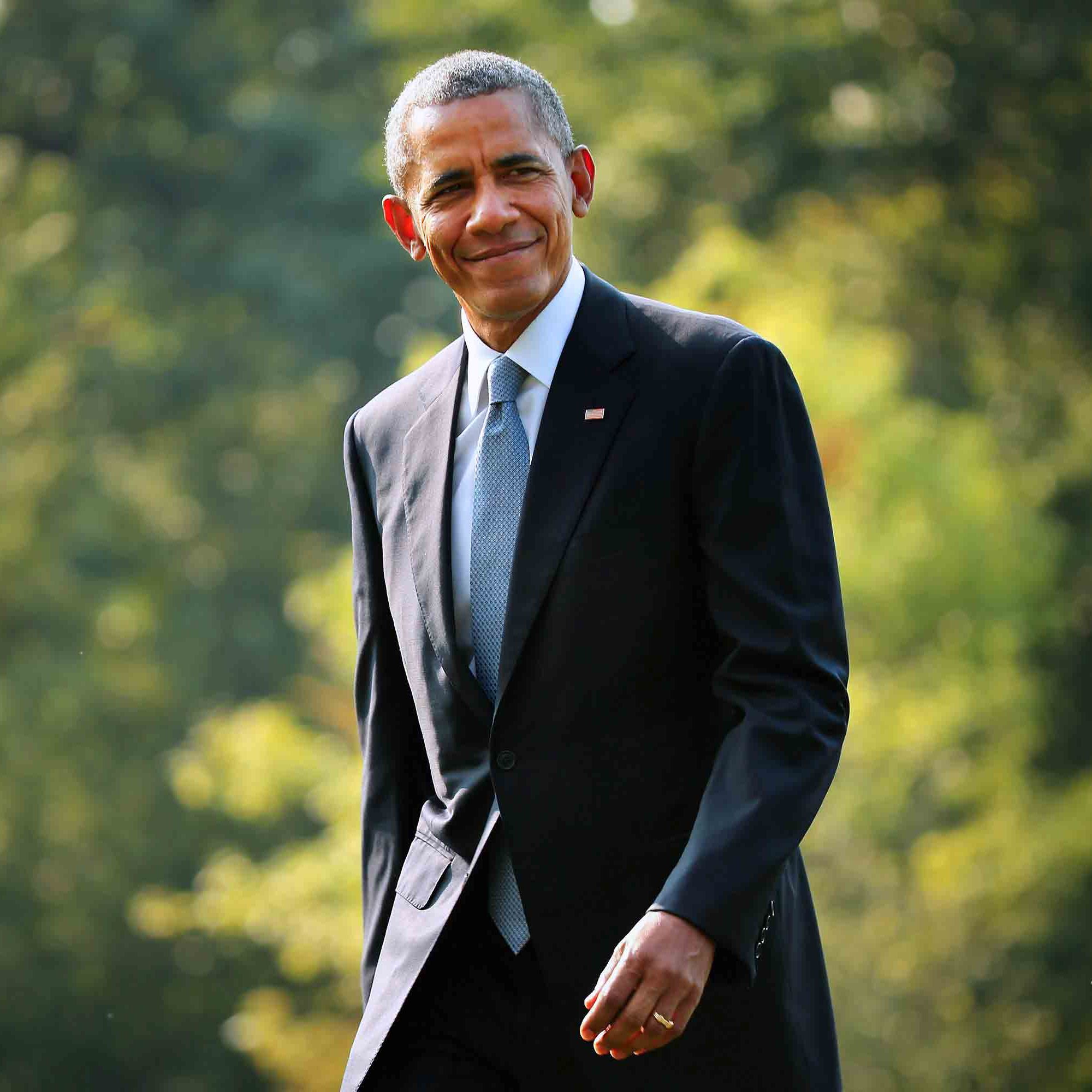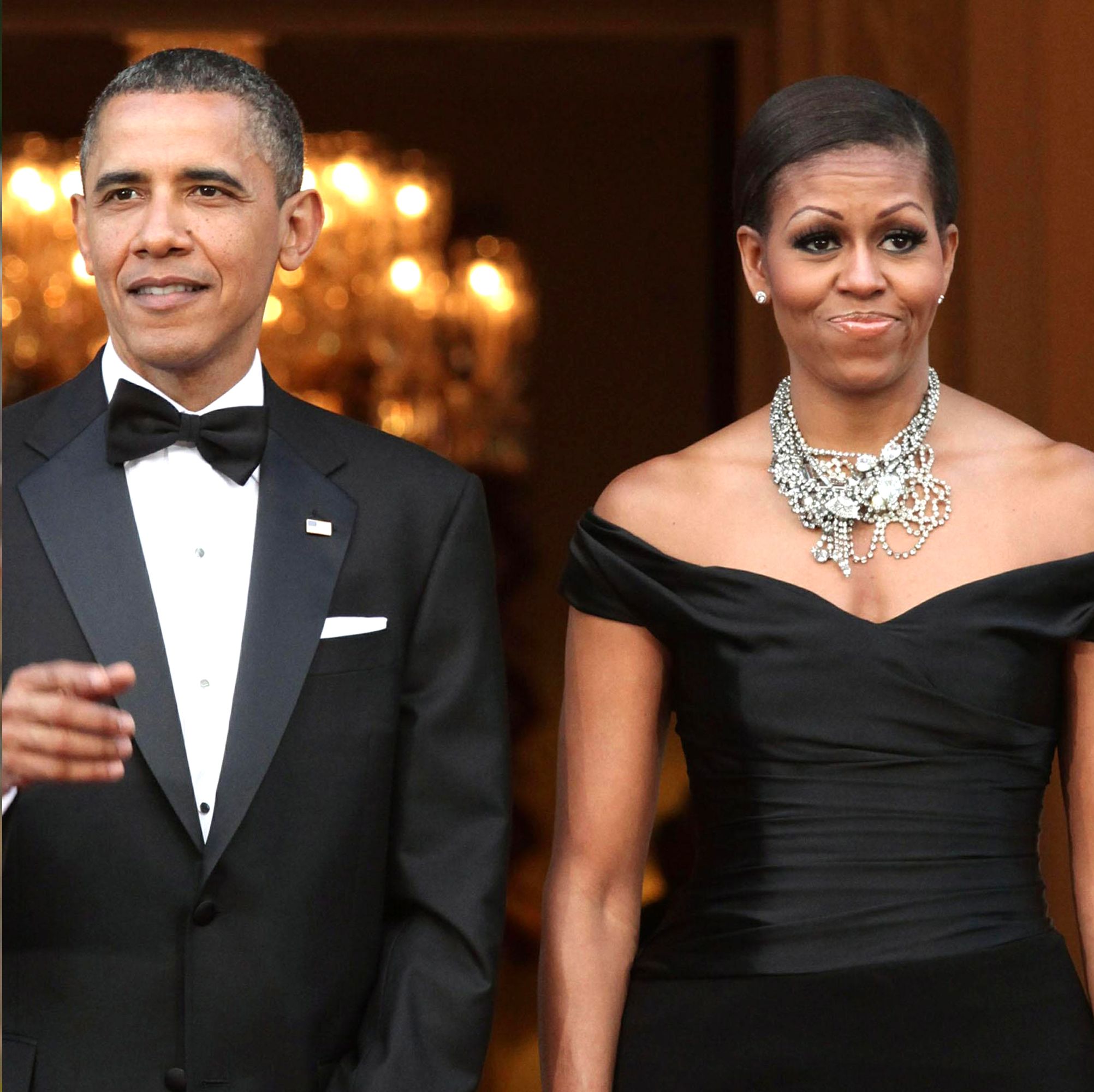Barack Obama
Discover breaking news about Barack Obama, with comment and analysis from the team at Marie Claire.
-

Barack Obama Says He's Been in a "Deep Deficit" With Michelle
The former POTUS revealed how he's attempting to make it up to his wife.
By Amy Mackelden Published
-

Barack Obama Reacts to Daughter Malia Dropping Her Last Name Professionally
He's a proud dad.
By Iris Goldsztajn Published
-

Malia Obama Drops Her Famous Last Name Professionally, Opting to Go by This Moniker Instead
She clearly wants to set herself apart from her powerhouse parents as she forges a career in Hollywood.
By Rachel Burchfield Published
-

Danielle Brooks Had the Best Reaction To Obama's 'Favorite Movies of 2023' Addition
The former president updated his yearly list to include "The Color Purple."
By Jamie Feldman Published
-

Why Weren't Meghan and Harry at Barack Obama's Birthday Party?
People have theories.
By The Editors Published
-

Who Is Jen Psaki, Press Secretary for the Biden Administration?
Features She's leading the first all-female senior White House communications team in U.S. history.
By Andrea Park Published
Features -

How Kamala Harris' Birthright Citizenship Spiraled Into a Racist Controversy
No, it's not an issue, and yes, the controversy is racist.
By The Editors Published
-

How Joe Biden Is Making Sure His Late Son Beau Is With Him
"I only have one regret: He's not here. Because we should be introducing him as president."
By Katherine J. Igoe Published
-

You Can Text Barack Obama "I Miss U" in the Middle of the Night Now
"Been thinking about u a lot recently..."
By The Editors Published
-

Meghan Markle and Prince Harry Signed With a Major Public Speaking Agency
Meghan Markle and Prince Harry have signed with New York's Harry Walker Agency, which also represents Oprah Winfrey and Michelle and Barack Obama.
By Emily Dixon Published
-

What 57 Celebrities Wore to Meet the President
Also required: Handshakes and toothy grins.
By The Editors Published
-

The Best Documentaries of 2019 That Are Already Changing Everything
Features From I Love You, Now Die to Untouchable, this year's documentaries are changing everything.
By Cady Drell Published
Features -

Michelle Obama Talked About Parenting With Meghan Markle in a Beautiful Interview in 'British Vogue'
Michelle said she's "so excited" for Meghan and Harry to experience parenthood.
By Emily Dixon Published
-

Obama Is Featured on Lin-Manuel Miranda's Latest Hamilton Remix, One Last Time: 44 Remix
Lin-Manuel Miranda quietly dropped the final "Hamildrop" track—and this one, fittingly a cover of Christopher Jackson's "One Last Time," features Barack Obama himself.
By Jenny Hollander Published
-

Obama's Endorsements in 2018 Include Abby Finkenauer, Gretchen Whitmer, and More
In his second major wave of endorsements for the midterm election cycle, ex-president Barack Obama released Monday a list of 2018 candidates who have his blessing. The list includes candidates Abby Finkenauer and Gretchen Whitmer, two high-profile female candidates running in 2018 in an effort to seek change.
By Jenny Hollander Published
-

Meghan McCain’s Eulogy for John McCain Is an Inspiring Criticism of the Trump Administration
John McCain's daughter, Meghan McCain, delivered a beautiful and inspiring eulogy at his funeral service on Saturday in Washington DC. Former Presidents Barack Obama and George W. Bush also spoke.
By Kayleigh Roberts Published
-

Michelle Obama Just Shared the Sweetest Throwback from Her and Barack's Wedding
All the heart eyes!
By Alex Warner Published
-

Obama Has Tweeted About Guns 52 Times—Trump, Just 4
One of those times was about Snoop Dogg.
By Alex Warner Published
-

"Michelle and I Have Been Disgusted by the Recent Reports": The Obamas Issue a Powerful Response to the Harvey Weinstein News
They've joined Hillary Clinton in condemning the powerful movie executive.
By Mehera Bonner Published
-

President Obama Says He Was a Crying Wreck When He Took Malia to College
“It was a little bit like open-heart surgery.”
By Megan Friedman Published
-

Barack Obama's Anti-Racism Tweet Is Now the Most-Liked Tweet Ever
The former president responded to the far-right rally in Charlottesville with a quote from Nelson Mandela.
By Katie Frost Published
-

Justin Trudeau and Barack Obama Had a Romantic Dinner Together in Montreal Last Night
And we were just sitting on the couch, SMDH.
By Megan Friedman Published
-

Barack Obama Slams Donald Trump's Decision to Pull Out of the Paris Accord
The former president accused the Trump administration of "rejecting the future."
By Emma Dibdin Published
-

Prince Harry and Barack Obama Just Hung Out at Kensington Palace
Such FOMO.
By Kayleigh Roberts Published
-

Obama Made D.C. Cool. What's Going to Happen Under Trump?
POTUS doesn't just set the tone for American policy; he holds major sway over culture—especially in his adopted hometown.
By Jessica M. Goldstein Published
-

What I Learned from 10 Years Working with Barack Obama
I joined Barack Obama's team when he was just a freshman senator, and spent the next decade criss-crossing the country with him. Here's my story.
By Alyssa Mastromonaco Published



